As a Jujutsu Kaisen fan, I regret to bring you this review of its new themed café in KL
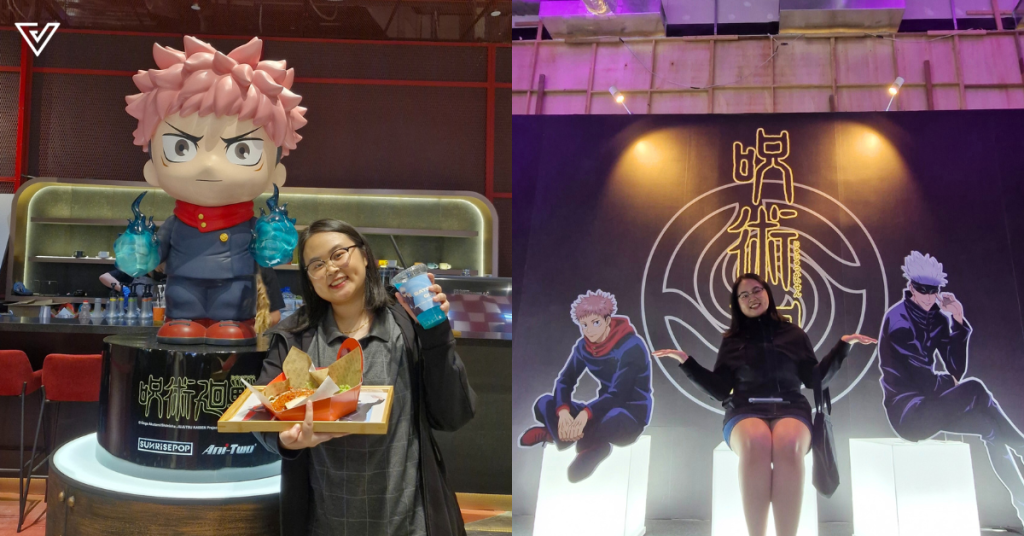
I know I’m not alone when I say that Jujutsu Kaisen is one of the best animes in recent history. And if you don’t think so, we can at least agree that it’s certainly been one of the most popular and hence impactful pieces of media in the past few years.
Malaysians seem to have a particular soft spot for the anime, especially after the Kuantan reference made during the you-know-what scene with Nanami Kento.
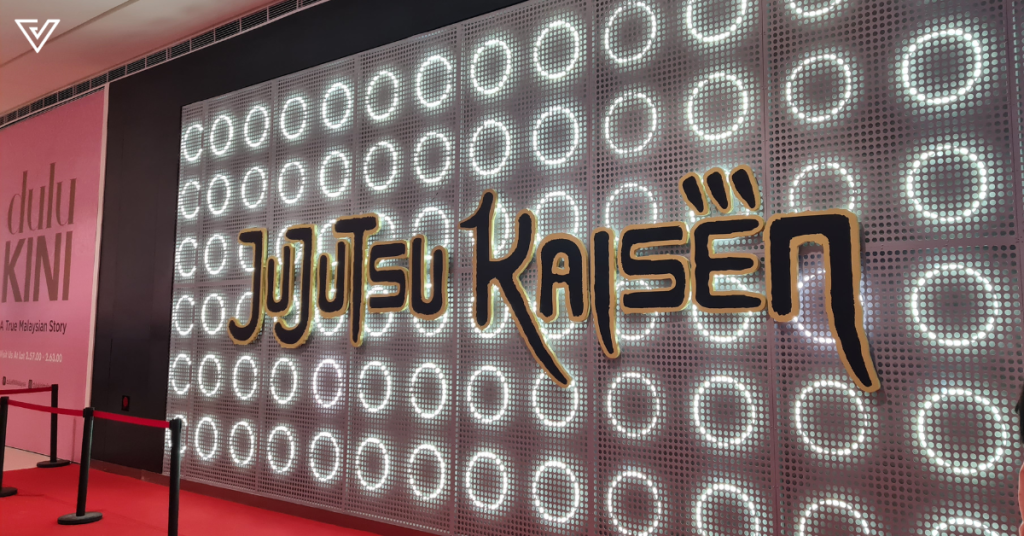
Given all these factors, it’s no surprise that ACO LAB, a new anime café in Pavilion Bukit Jalil, chose to collaborate with Jujutsu Kaisen as its first anime to feature. We were told the theme may change every few months going forward.
ACO LAB is a project by ACO MEDIA, an entertainment company that offers services relating to concerts, exhibitions, as well as film production and distribution.
We were invited for the launch of the Jujutsu Kaisen Experience, here was our experience at the anime café.
Pictures please
From now until July 27, the Jujutsu Kaisen experience will be held across from the ACO LAB café, featuring five photo zones for fans to snap pictures at.
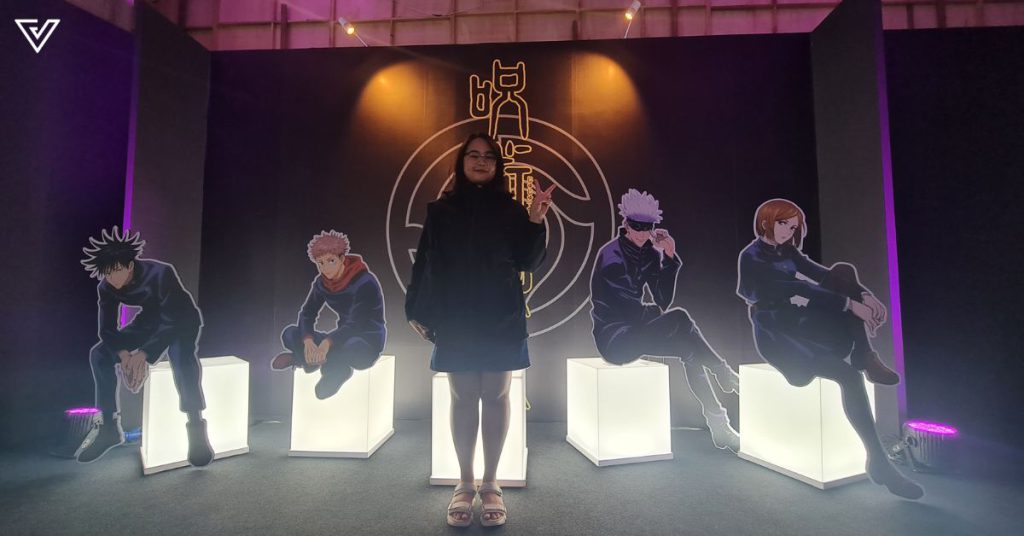
Unfortunately, the first photo zone with the main four characters (Yuji, Gojo, Megumi, and Nobara) was hard to photograph, given that the stools they sit on emit light. So, if you have a phone camera that doesn’t capture light well, forget about it.

The next zone is just a collage wall of Yuji, which felt a little odd. Then, there’s a zone with standees of all the main villains. But instead of having their names printed on the wall behind, I would’ve preferred a more immersive backdrop—perhaps Jogo’s Coffin of the Iron Mountain domain?
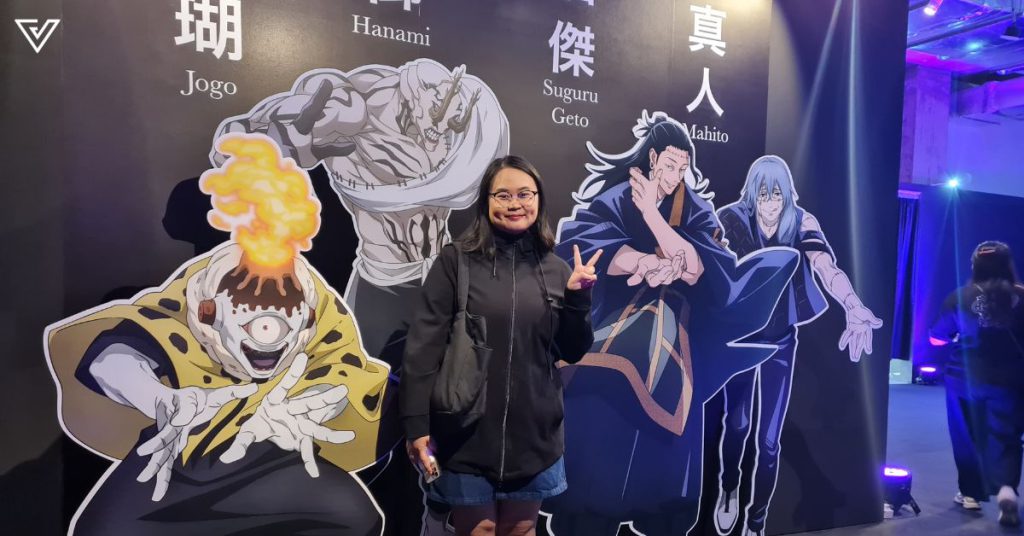
The photo zone with Mahito is arguably the best designed. But as interesting as Mahito’s character is, we thought it would be way cooler if it were Sukuna’s Malevolent Shrine domain instead. Imagine how epic it would be to have a throne there that you can sit on!

It was a shame to see that Tokyo Jujutsu High’s second-year students such as Maki, Yuta, Toge, and Panda weren’t there. Personally, I’d rather see them than the characters from the Kyoto school.
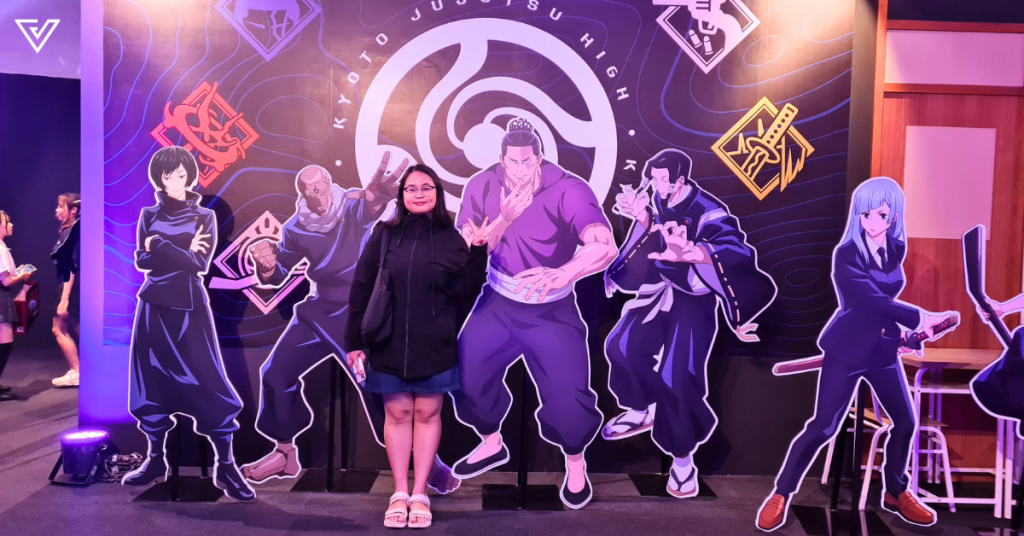
At most, it might take you just 15 minutes to go through the whole place, and that’s if you’re stopping to take a photo at every zone. There’s really not too much to experience here, which was a slight shame.
A fan’s paradise
Now, compared to the photo zones, this area is definitely a lot more engaging.
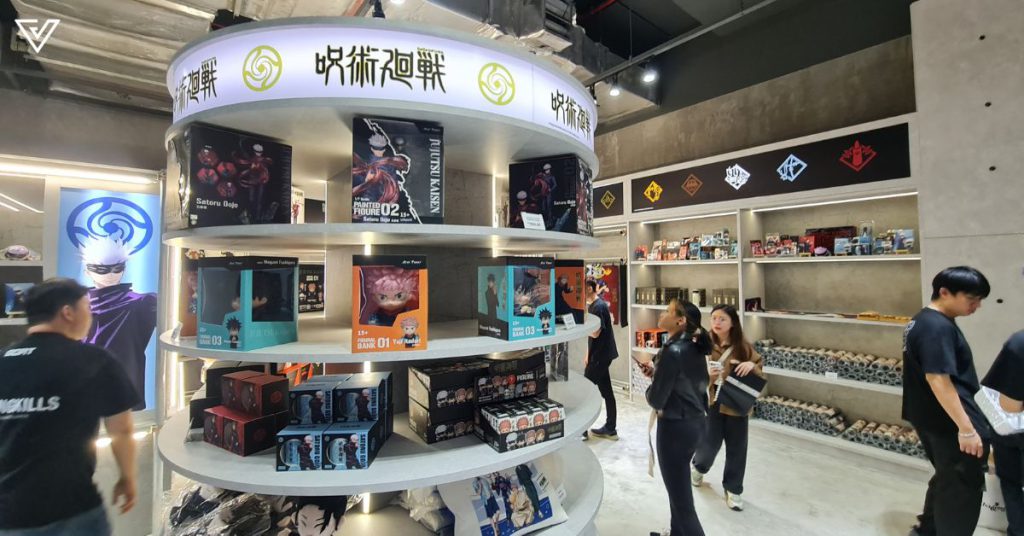
Touted as the largest souvenir shop for Jujutsu Kaisen in Malaysia, there’s really a lot to look at here.
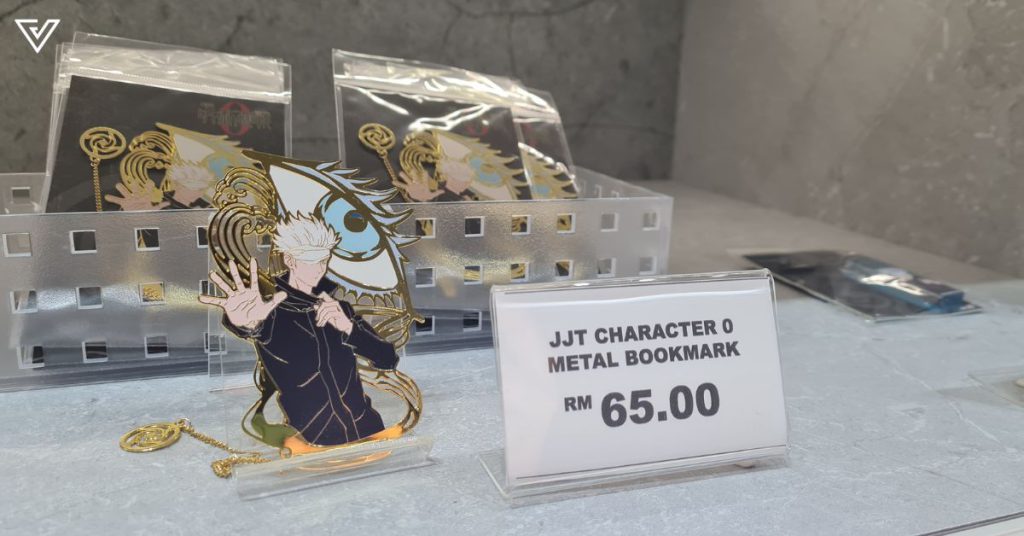
Admittedly, some of the merch was a bit on the tackier side, but hey, they’re just serving the demand. I personally prefer the more premium and subtle-looking merch, such as these gorgeous metal keychains of different characters’ weapons.
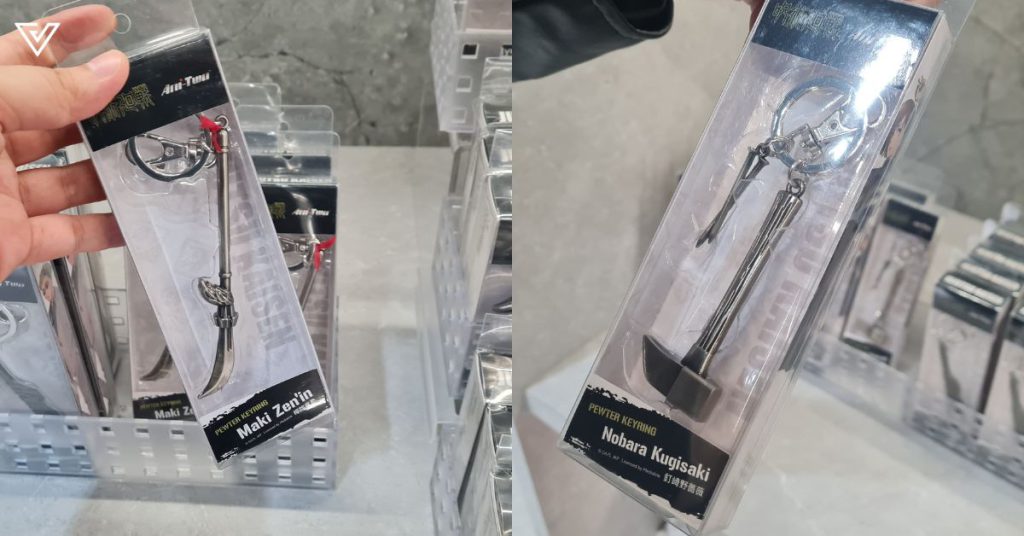
And rest assured that all these merch are official and licensed.
Inside the souvenir shop, there’s also a photo booth in the corner. Here, you can change filters, with two fun options being Manga and Cartoon, and then select one of four frames at the end, correlating to the four main characters. At RM20 a pop, you can get a printed copy.
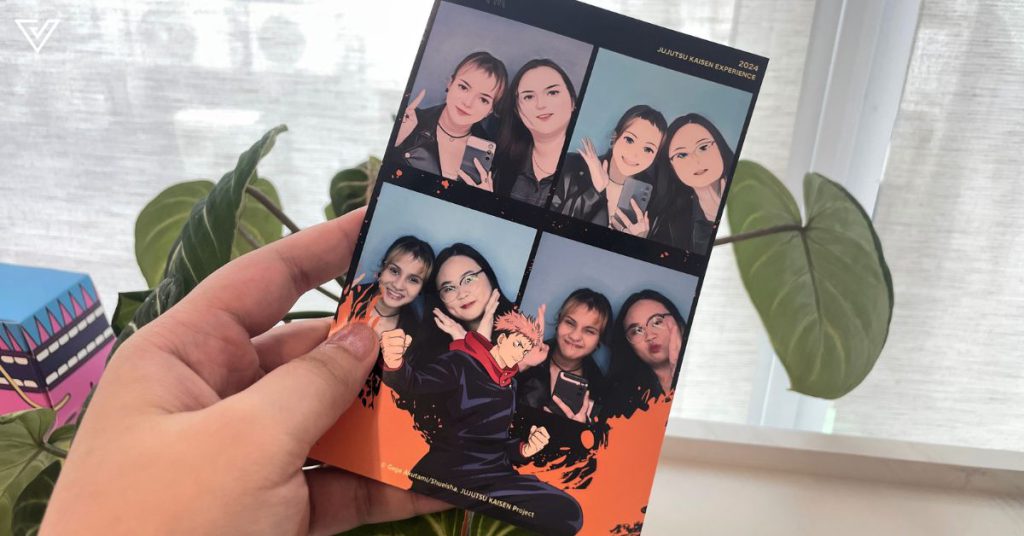
The food was… a flop
Sadly, we felt like the food fell way, way short of our expectations. We ended up ordering the Blindfolded Gourmet’s Choice (RM28.90), which was Gojo’s dish with a prawn sandwich and chips.
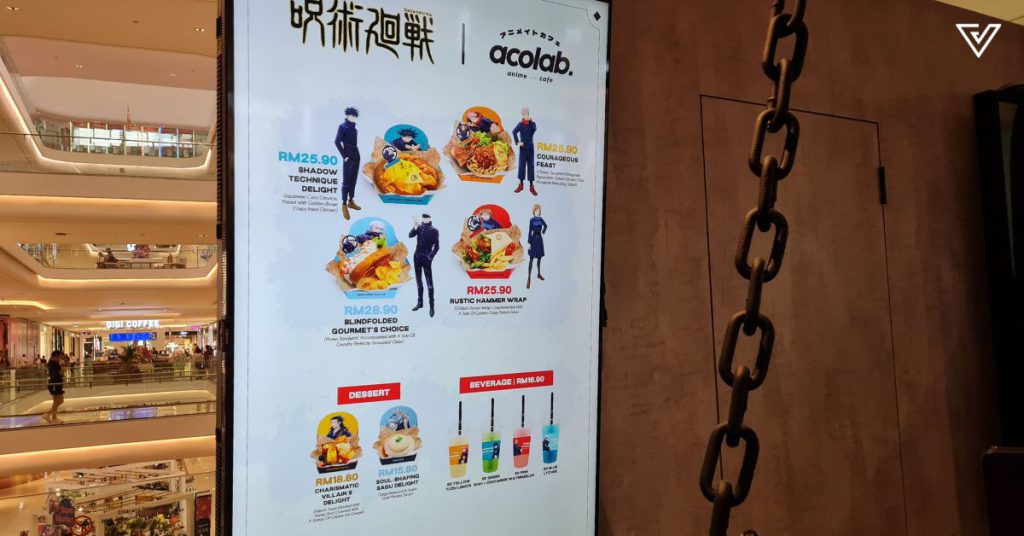
We also got Yuji’s Courageous Feast (RM25.90), a chicken spaghetti bolognese with grilled chicken chop.
The small amount of chips made the dish look quite sad, but the chips might’ve been the best part of the meal.
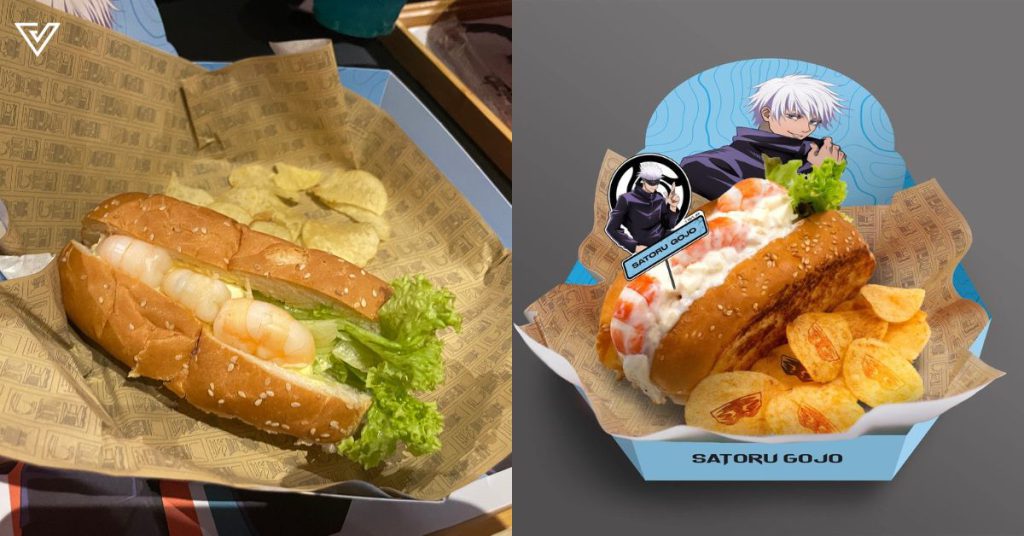
For the sandwich, the bread was too thick, and was even a little stale. I believe it would’ve been miles better if served toasted and warm.
The prawns tasted quite fishy, and the egg mayo sauce was too little to mask it. Meanwhile, the lettuce was only placed on one side.
The spaghetti dish was a little better. The sauce was a bit on the acidic side, but it wasn’t bad. It tasted ketchup-y, which might not be everyone’s cup of tea, but is pretty common in Japan, such as with its Napolitan dish.
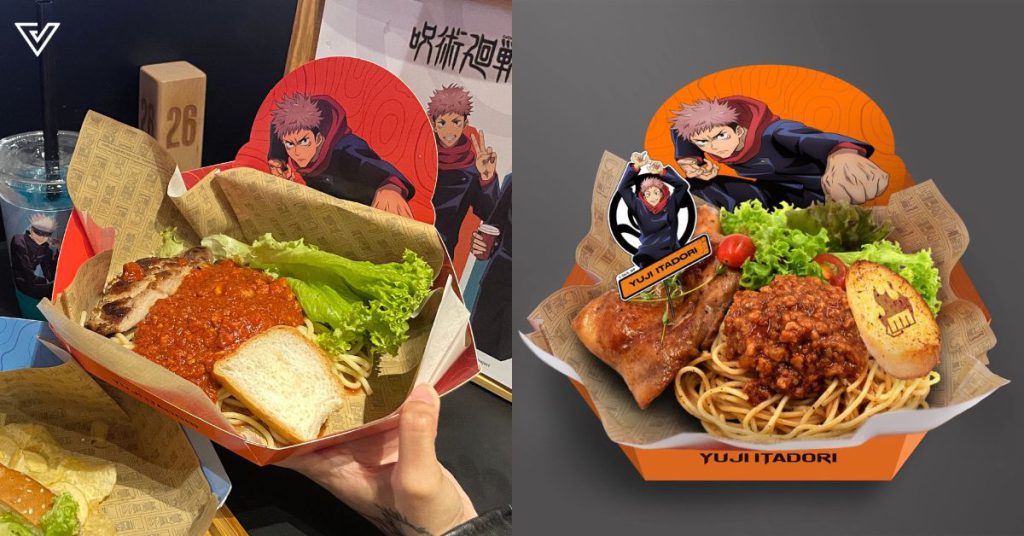
Thankfully, the drinks were quite enjoyable. With chewy clear boba, our Blue Lychee and Yellow Yuzu Lemon were both quite refreshing, without being too sweet. But RM16.90 for each drink is a little exorbitant.
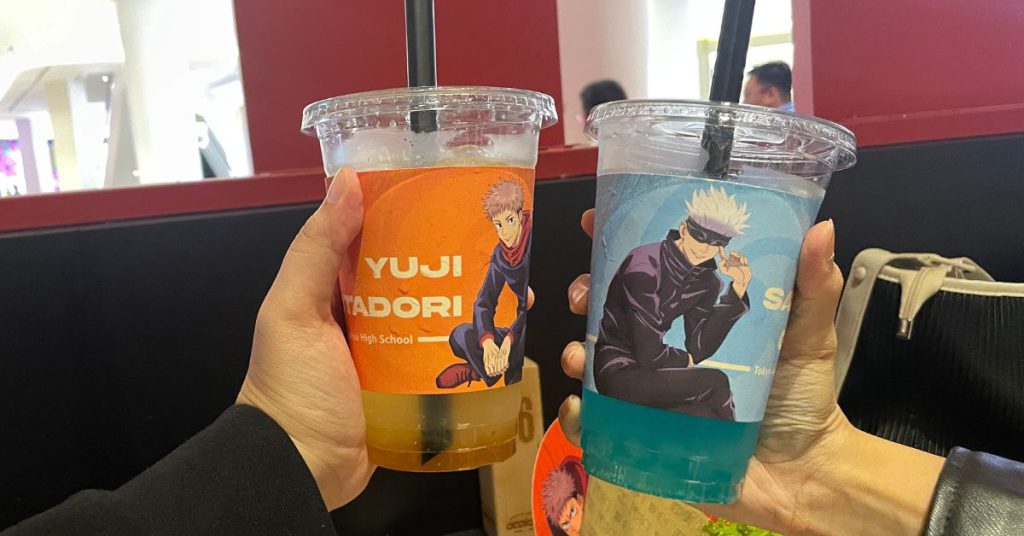
Since ACO LAB is a café after all, we do wish the food was better. We’re not asking for gourmet dishes, but for us Malaysian foodies, the culinary factor is something that can make or break the whole experience.
That said, we understand that the launch may have been stressful for the kitchen, as they stopped orders momentarily as well.
With that in mind, we hope that our gastronomical experience might’ve been a fluke, as it left much room for improvement.
Expanding their domain
As a fan of the anime, I was hoping for… more. More interactivity, more immersivity, more excitement.
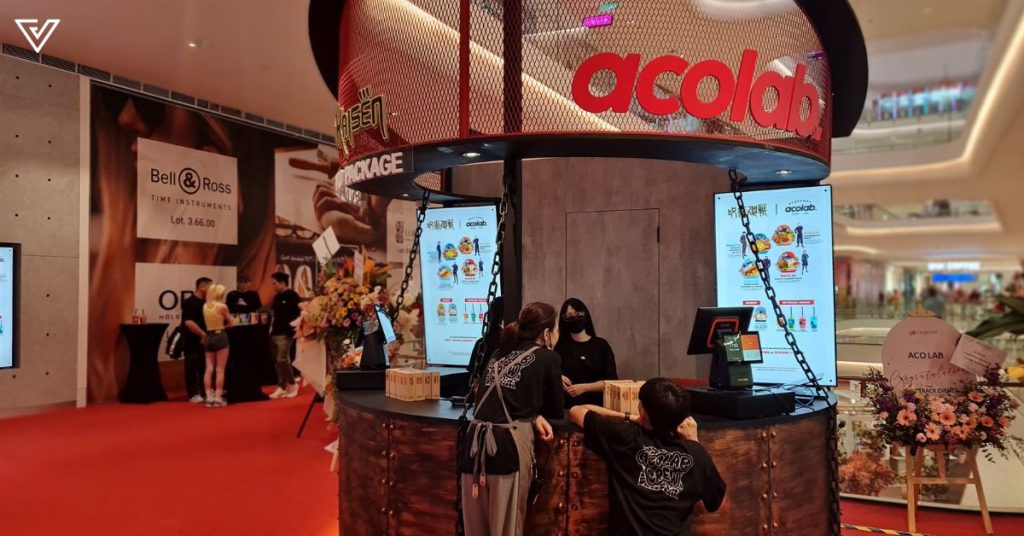
Not that we’re expert event planners, but we had a couple of ideas:
- Props: We think props like Nobara’s hammer, Sukuna’s finger, or even the school jacket would make the photobooth experience much more immersive.
- Music and media: During the day, they were playing the soundtrack from JJK on repeat, but I believe putting some ambient music appropriate for each photo zone will make it more interactive. Adding some screens playing relevant clips and scenes that might play at every other corner might help with the overall atmosphere.
- Introduction to the source material: You might think that non-fans just shouldn’t visit, but I believe that isolates a lot of people who might be looking for a fun activity, or simply want to tag along with their friends. I’ve attended experiences with source material that I’m unfamiliar with, and appreciated whenever there were introductions whether that be through videos or through written text on the walls.
Of course, we understand that there may obstacles such as with licensing, approvals, and budget. But as a fan of the anime, I believe these little additions would make a huge difference in the overall experience.
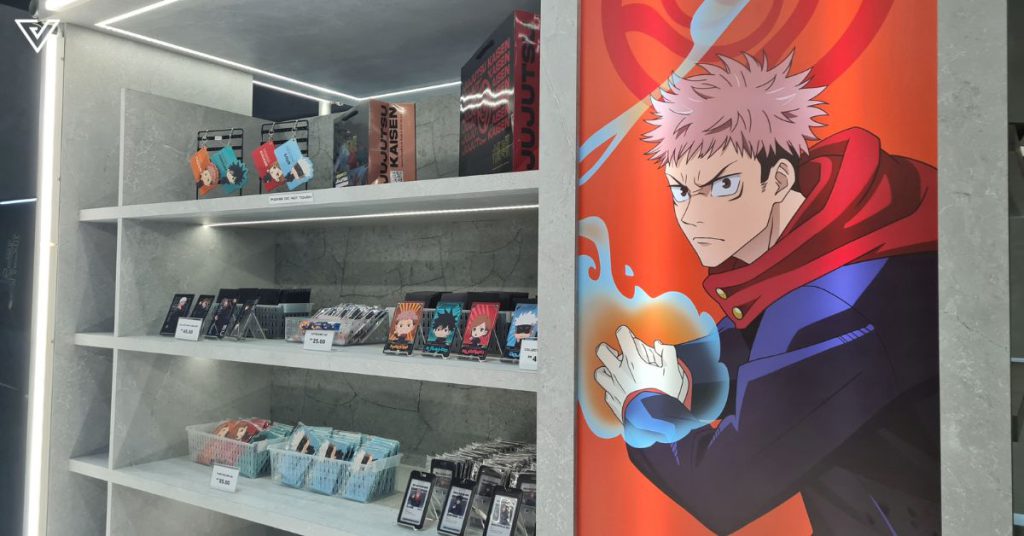
With everything said and done, I do still think it’s a worthwhile experience for fans in particular, just maybe lower your expectations. Available for purchase on Ticket2u, the ticket prices are quite agreeable too:
| Ticket | Price (including tax) | Inclusive of |
|---|---|---|
| RM20 Souvenir Package | RM21 | – Photo zone admission – 1 x Drink – 1 x Coaster |
| RM40 Souvenir Package | RM41.12 | – Photo zone admission – 1 x Main dish – 1 x Chop collection card – 1 x Collectible card |
| RM70 Souvenir Package | RM71.96 | – Photo zone admission – 1 x Meal set (Main Dish, Drink & Dessert) – 1 x Coaster – 1 x Chop collection card – 2 x Collectible card |
So, don’t let our experience deter you from trying it out.
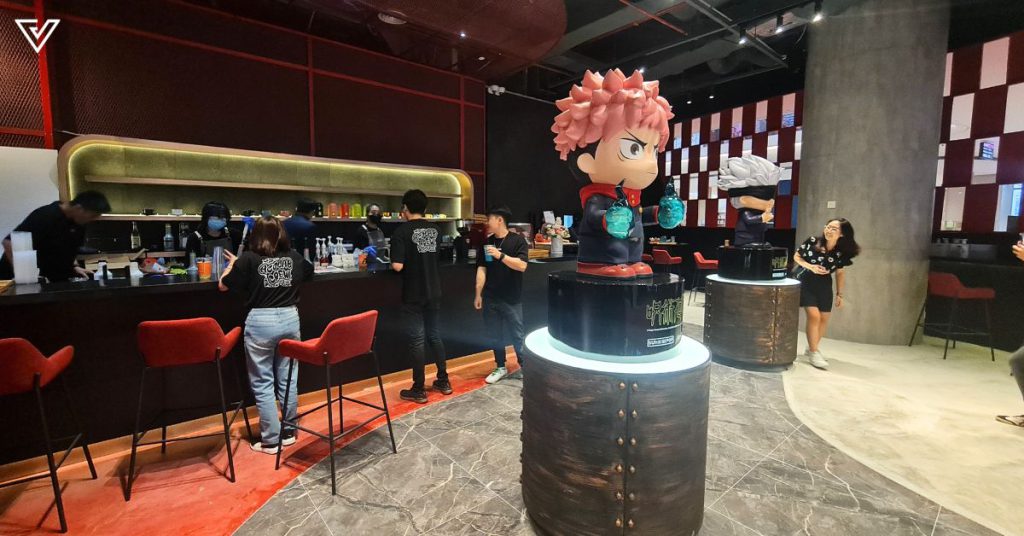
This is ACO LAB’s first time conducting such an event, and for a new café, we understand that there are many challenges and bumps along the way. We really hope to see ACO LAB improving down the road to give anime fans more immersive and unique experiences.
Also Read: How financial institutions & universities are reshaping their network through AI-native solutions
From closing RM5.58mil to expanding abroad, here’s how ChargeSini has grown in just 2 yrs
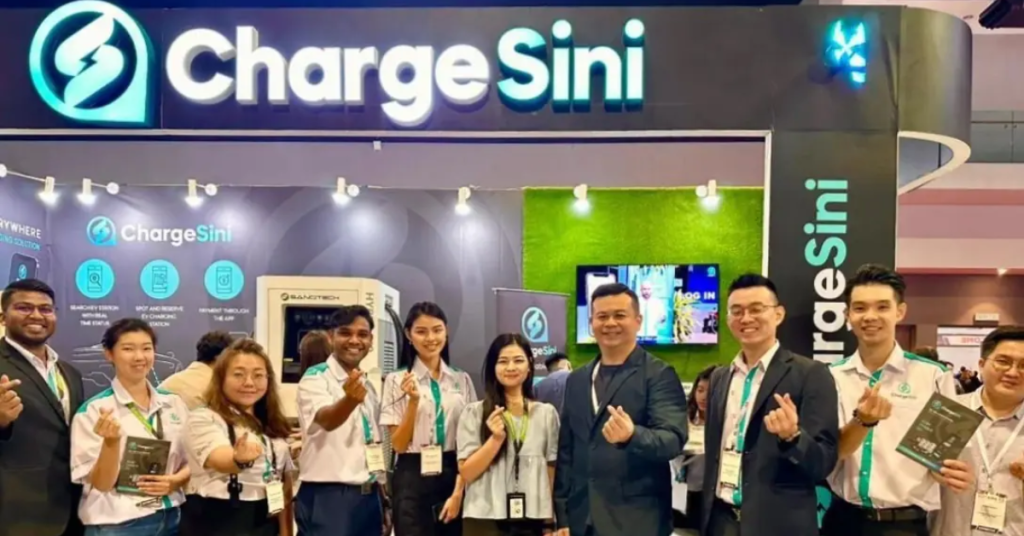
[Written in partnership with ChargeSini, but the editorial team had full control over the content.]
Just a couple of weeks ago, Tesla’s viral Cybertruck had pulled up in Kuala Lumpur, and the hype has been unreal. My timeline’s been plastered by photos and videos of sightings, showing off the edgy, futuristic car from all angles.
This just goes to show that electric vehicles (EVs) are definitely all the rage nowadays in Malaysia.
And crucial to this demand and increased adoption are EV charging point operations.
ChargeSini is one such operator in Malaysia. We’ve been following the homegrown startup for a while now, so here’s a look back on milestones it has achieved in the past two years, and what’s in store for the journey ahead.
July 2022: Starting up
ChargeSini got its start in 2022, established by founder James Goh and his team of co-founders.
An avid car enthusiast, James is also the a co-founder of Raytech window tinting and Caricarz, a vehicle re-commerce listing website for used cars.
Leveraging his past expertise, the “autopreneur” founded ChargeSini to contribute to the growth and development of Malaysia’s EV market.
October 2022: Beginning the charge
In October, ChargeSini broke ground with its first charging stations, charging up the business for the rest of its growth.
April 2023: Forming partnerships
Fast forward to the next year, the young company began forming strategic partnerships, starting by signing a Memorandum of Understanding (MOU) with Sarawak-based e-payment tech company Pay&Go.
The agreement saw ChargeSini and Pay&Go mutually agreeing to collaborate towards boosting EV charging infrastructure.
The same month, ChargeSini also worked with British automotive brand MINI in Malaysia for a branding exercise, establishing the first MINI charging station at The Swan Garden Hotel Melaka.
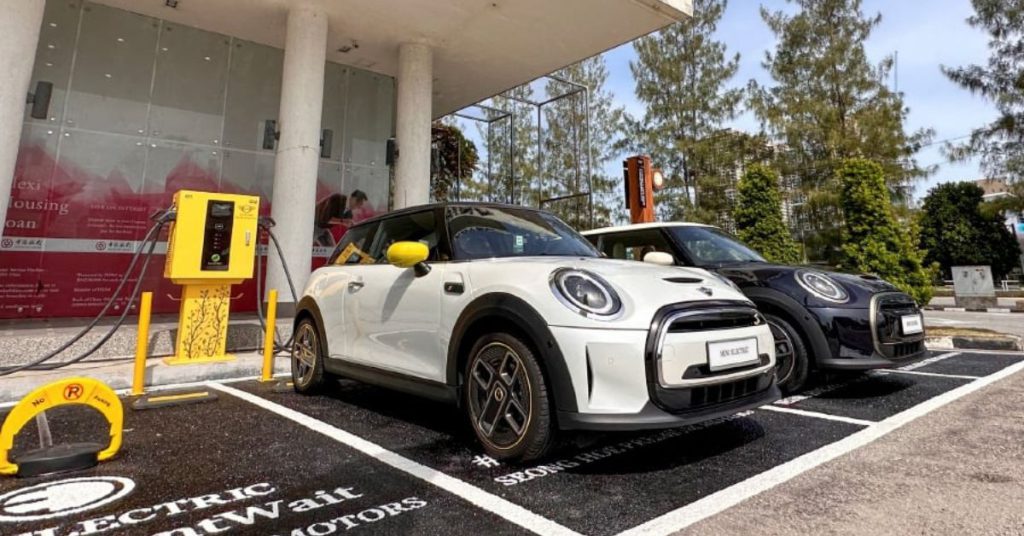
May 2023: Bagging it up
In May 2023, ChargeSini successfully closed their equity crowdfunding round on pitchIN. The local EV charging solutions startup raised RM5.58 million from 74 investors.
At the time, co-founder Nick Leong told Vulcan Post that the fresh funds will be used to procure more EV chargers for the company—a claim that they certainly made good on.
September 2023: Venturing east
Later that year, ChargeSini commemorated the launch of their very first EV stations in Sabah. Specifically, they were located at Riverson The Walk, Kota Kinabalu.
This solidified ChargeSini’s dedication to ensuring every part of the country has access to EV charging stations.
In fact, in that third quarter of 2023, the startup managed to install a total of 162 new EV charging ports at 46 locations all over Malaysia.
October 2023: New partnerships
In October, ChargeSini signed a Memorandum of Understanding (MoU) with Mydin, the homegrown hypermarket chain all Malaysians know.
Under the MoU, ChargeSini aimed to set up a total of 24 EV charging stations at Mydin outlets nationwide.
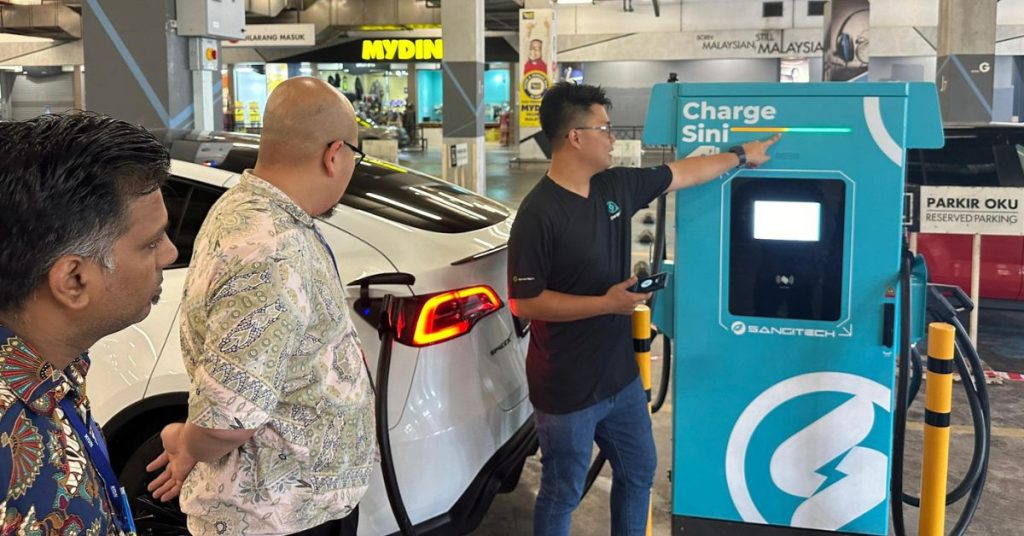
Leveraging the established nature of Mydin, this collaboration worked to promote EV adoption across the country.
November 2023: Developing Sarawak
This month marked the launch of ChargeSini’s first EV stations in Sarawak, which is located at The Podium, Kuching.
December 2023: Ending the year strong
By the end of the year, ChargeSini boasted a total of 582 Charging Ports. Specifically, they had 464 AC chargers and 118 DC chargers to their name.
February 2024: Even more partnerships
Earlier this year, ChargeSini collaborated with Edotco.
For the uninitiated, Edotco is considered (by some) to be one of the three unicorn startups in Malaysia. Specifically, it’s an integrated next-gen connectivity infrastructure services company.
The goal with this partnership is to install EV charging stations at over 200 potential in-building locations nationwide in the next two years, further widening the network of chargers in Malaysia.
March 2024: A new way to grow
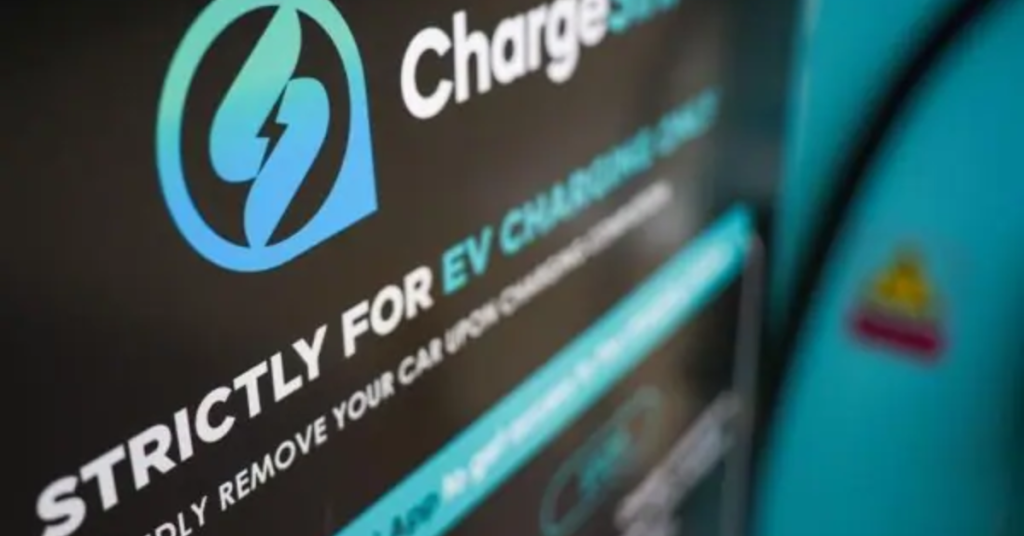
In March, ChargeSini revealed that it would be adopting a new business model through its “Project Partners”.
This initiative allows for individual investors to buy and own their own EV charging stations, making it a win-win situation for them as well as ChargeSini as they continue to grow.
In conjunction with this new initiative, ChargeSini also started raising its Series A, targeting to raise US$6 million within a timeframe of six months.
April 2024: Cross-country collaborations
By April this year, ChargeSini had already established its first EV station in Medan, marking its foray into Indonesia.

On top of that, ChargeSini announced a collaboration with Charge+, an established integrated EV charging solution provider for Singapore.
With this partnership, they are forming the largest Singapore-Malaysia EV charging network, with more than 2,400 points between the two countries.
By the end of this year, the two aim to increase this to a whopping 4,000 charging points, making them accessible to users of either platform as they travel across the Causeway.
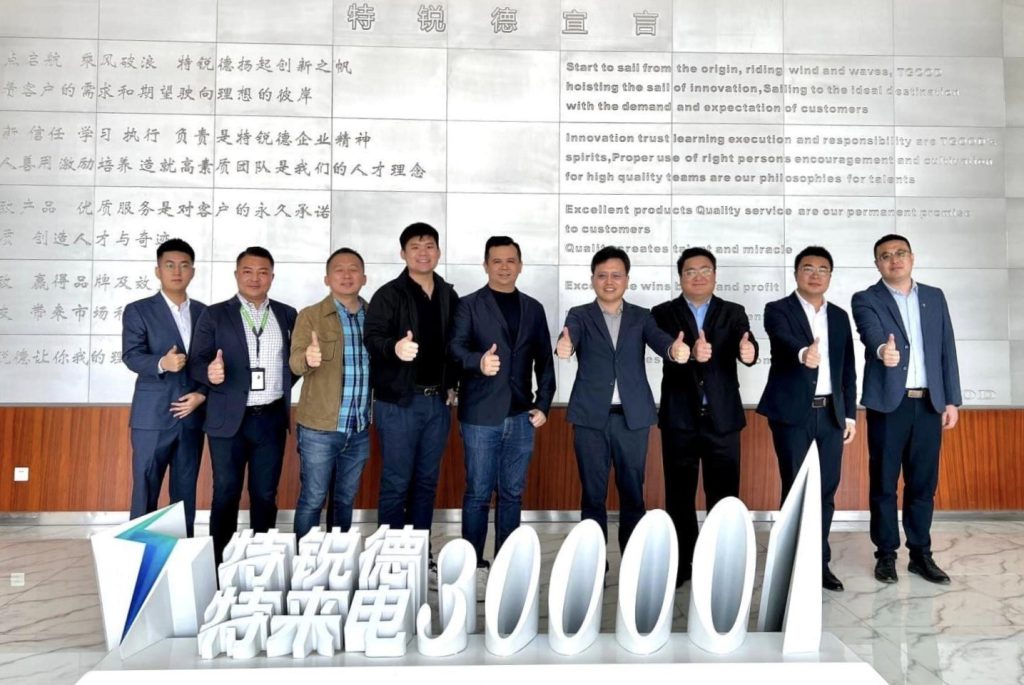
And before wrapping up the month, ChargeSini also announced a collaboration with TELD New Energy Co Ltd, recognised as a leading EV charging point operator in China, with an impressive global network of 550,000 charging points.
Details of the partnership have not been revealed, but it marks an exciting foray into a broader market, signalling future collaborations between ChargeSini and TELD.
The future is all charged up
Just shy of two years old, ChargeSini has already accomplished quite a number of milestones, playing a part in accelerating Malaysia’s EV landscape.
And it’s definitely not stopping here.
Looking at its past achievements, it’s clear that a large part of ChargeSini’s growth is by way of collaboration. As the saying goes, it takes a village to raise a child. Well, it takes a whole nation to grow a robust EV industry.
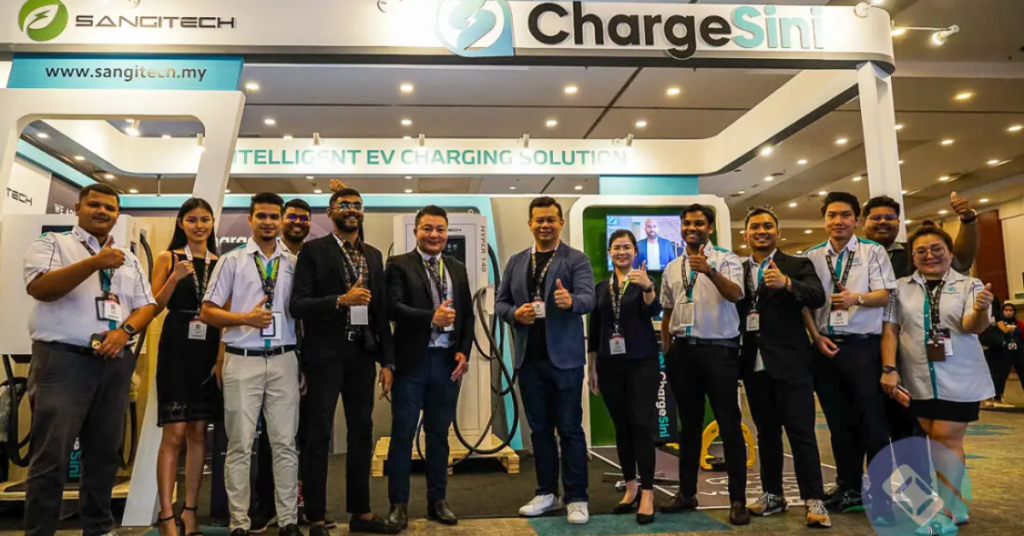
Thus, for the rest of 2024, ChargeSini aims to continue driving its growth through partnerships, continuing its EV installations with Mydin, while working with other companies such as Lotus’s, Econsave, and AEON.
They also have plans to work with governmental bodies such as the Penang Island City Council to propel EV charging too.
ChargeSini proudly shared that in 2025, plans in store include launching a new urban solution by the name of Energy Storage System (ESS), a 215kWh battery storage system designed for tasks like EV Charging, Peak Shift, Energy Backup, and Demand Response.
They added that they’re set to manufacture their own AC charger in Malaysia, handling the entire process from design to packing in-house.
With that, ChargeSini aims to have the largest EV charging hub in the country—an achievement we can’t wait to see happen.
Also Read: How financial institutions & universities are reshaping their network through AI-native solutions
Featured Image Credit: ChargeSini
From groceries to household items: foodpanda unveils new house brand offering over 250 products
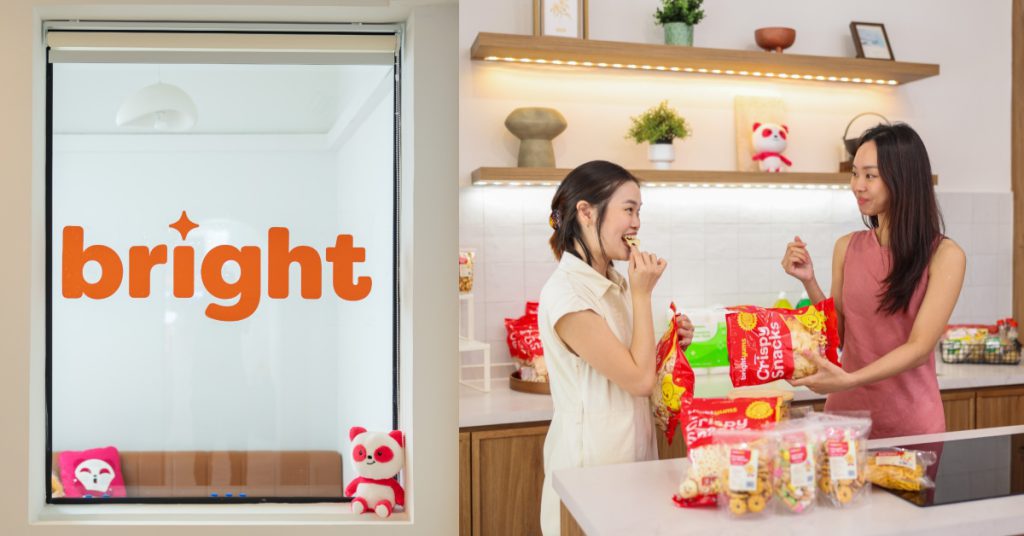
Earlier today (April 29), foodpanda Singapore officially launched its house brand, bright, a new product line of affordable but high-quality groceries and household staples.
The brand was first unveiled in an exclusive media launch event last Thursday (April 25), and it’s described as a brand umbrella containing three subbrands:
- brightfarms: Fresh produce (eg. coconut, eggs)
- brightyums: Ready-to-eat meals and snacks
- brightspots: Household products (toilet paper, cleaning products, personal care products eg. hand wash)
bright is an upgrade of foodpanda’s house brand, which initially debuted and tested as brightfields in 2021, with three products: eggs, mineral water and toilet paper. Their product range has since expanded to over 250 products across all three subbrands and is currently sold exclusively on pandamart.
Kevin Zagolin, Director of Quick Commerce at foodpanda Singapore, added that all bright‘s products will follow the company’s promise to deliver groceries within the hour, 24/7, all year round.
He expressed his optimism that the brand will resonate well among the Singaporean population, given that it is marketed as a “house brand with pocket-friendly prices.”
bright‘s the number one brand on pandamart right now, 50 per cent of the orders contain at least one product of our house brand, so we felt that it was the right time now to officially stand behind the brand as foodpanda and call it our house brand.
I think all Singaporeans feel that they need to be very close to the budget and to our wallet [when shopping for groceries], so I think it fits also very well in these economic circumstances, given that bright is an affordable brand.
Kevin Zagolin, Director of Quick Commerce at foodpanda Singapore
To commemorate the launch, foodpanda users can use the promo code “TRYBRIGHT” to receive a 20 per cent discount on all bright products from April 29 to May 31 2024, with no minimum spend required.
Affordability ≠ Cheap
Most people might perceive house brands as cheaper and of lower quality—a narrative that Zagolin aims to debunk with bright.
In a media presentation, he shared that bright‘s products are similar in quality to non-house brands, but they are sold at up to 25 per cent less.
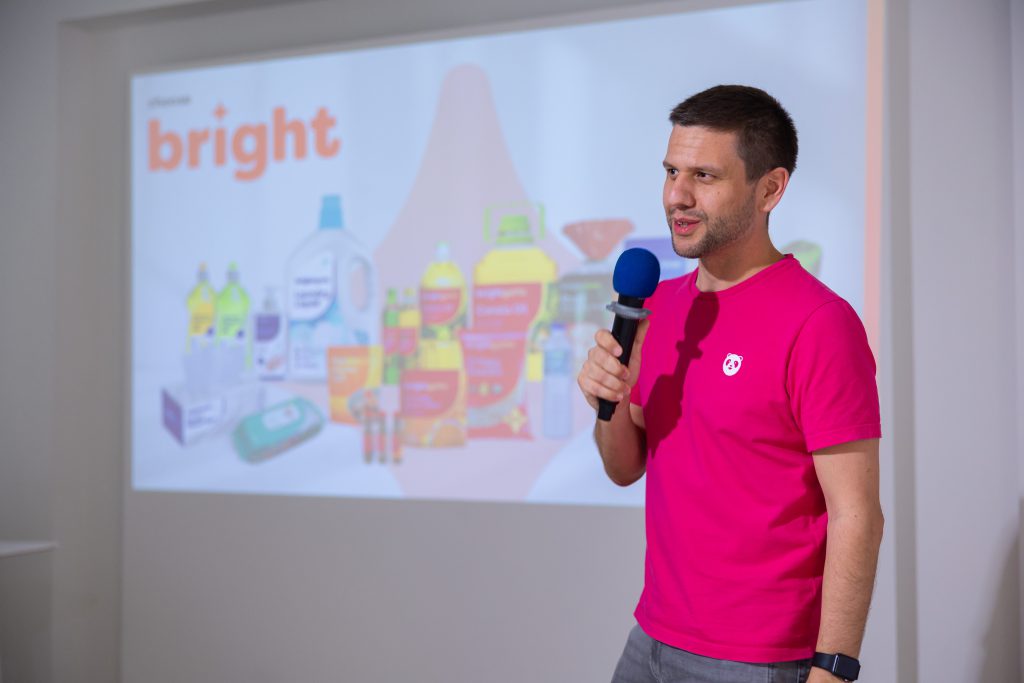
Zagolin further explained in an interview with Vulcan Post that bright was able to achieve affordability with two strategies: working up the value chain and focusing on specific product features.
By collaborating directly with local suppliers and distributors and removing unnecessary product features, foodpanda is able to absorb a portion of the production costs and offer lower selling prices to customers.
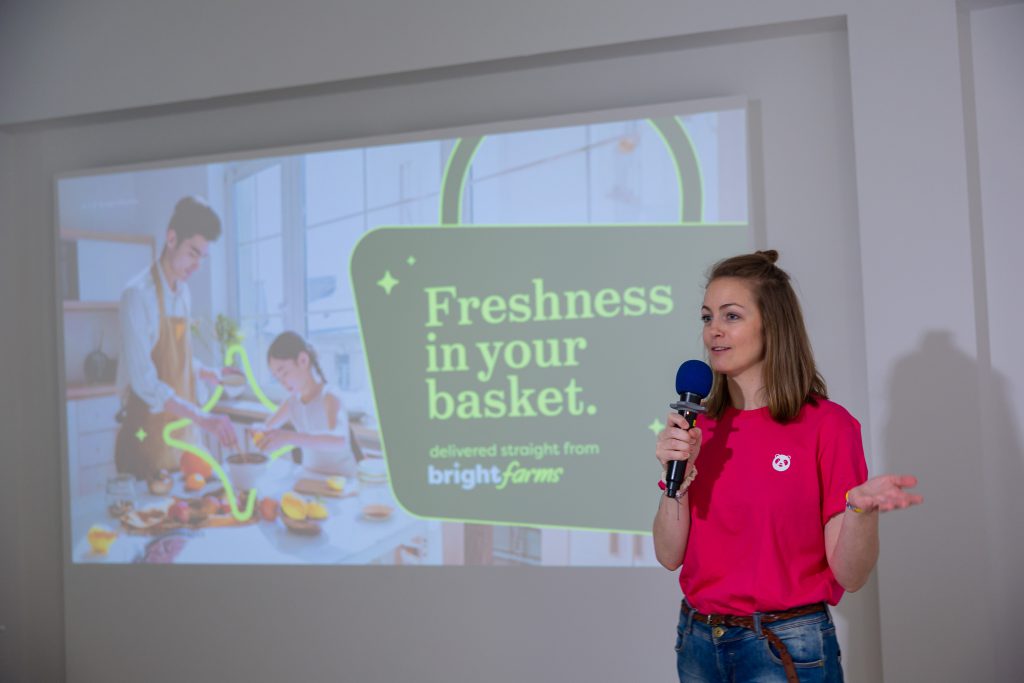
Delphine Dierckx, the director of Dmart Commercial & CPG Media Solutions at foodpanda APAC, added that bright is currently sold in eight countries across the Asian-Pacific region, including Taiwan and Bangladesh.
While both Singapore and Malaysia offer the widest range of bright products, Dierckx highlighted the importance of localisation to achieve success across different markets.
“Yes, you’d probably have water across the eight countries, but [while] you might have durian in Singapore, you won’t have durian in Bangladesh,” she added.
Convenience is the DNA of quick commerce
As the director of quick commerce (q-commerce) at foodpanda Singapore, Zagolin had to oversee how convenience can be guaranteed for all customers at any day, any time. However, concerns were raised about the brand’s ability to maintain the freshness of groceries—specifically for bright‘s fresh produce arm, brightfarms.
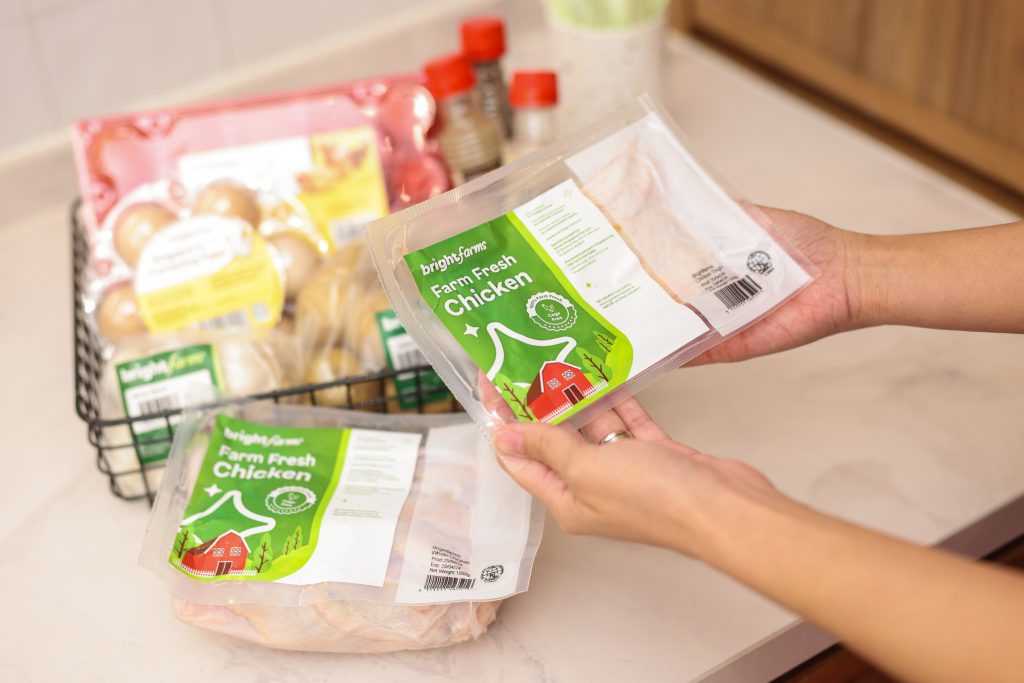
Zagolin addressed this, stating that the company undergoes stringent selection processes on potential manufacturers and distributors before they are onboarded and that the team conducts extensive daily quality checks on all fresh produce when it arrives.
These quality checks are conducted throughout the day, and products will be removed once their freshness or quality deteriorates. Pickers are also trained to follow strict guidelines on handling and packing fresh produce before it’s sent for delivery.
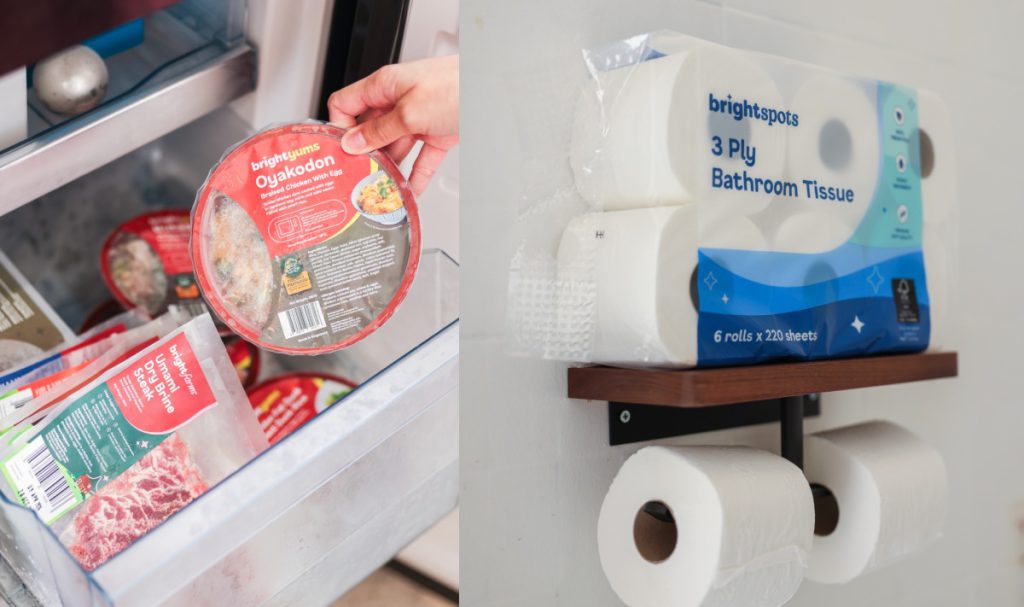
To provide more convenience for its customers, easy-to-handle products, such as pre-cut fruits and toilet paper sold in smaller packs, are offered on pandamart.
Quality above everything
Over the years, many big-name supermarkets and smaller online shopping retailers have launched their own house brands. Some might argue that foodpanda is late to the game, but Zagolin begs to differ.
He explained that the company took a lot of time to research and develop its products, choosing to expand its range slowly. “We didn’t want to rush this; we really wanted to take the time to make sure the product makes sense.”
Zagolin also clarified that the launch of bright was not meant to convert shoppers from national brands. Rather, the focus was to encourage more people to shop for their groceries online and for pandamart users to consider other categories that might be more affordable.
Looking forward, Zagolin shared his hopes to grow the brand in the near future, adding that the company will continue to work on products relevant to its consumers and eventually expand the product range across all three subbrands.
However, he was quick to reiterate that foodpanda will “not force the growth” of the brand.
No hard target for the sake of having targets, it’s going to be if and when it makes sense to customers.
Kevin Zagolin, Director of Quick Commerce at foodpanda Singapore
Featured Image Credit: foodpanda
Also Read: Cooking for a cause: foodpanda launches Pau-Pau Breakfast Club to tackle food insecurity
These M’sians invested RM100K to serve Hainanese kopi in a modern KL cafe setting

Kopitiams have been around in Malaysia since the 1800s. It all began when Hainanese folks moved from China to Malaysia.
Back then, other dialect groups like the Hokkien, Cantonese, and Teochew were already big shots in trade, mining, and farming. So, the Hainanese who worked in hotels took a chance and opened up small restaurants and kopitiams across Malaysia after World War II.
From street-side kopitiams to trendy hipster cafes, Kuala Lumpur’s coffee scene has been on the rise.
In this bustling coffee scene, you’ll find Jiak Kopi, a cosy cafe tucked away in GMBB Mall (GMBB), with its roots firmly planted in the age-old tradition of Hainan coffee.
From childhood ambition to brewing reality
Cherrie Loh and her cousin Tommy Low always had a childhood dream of opening a cafe but it took the tumultuous effect of the pandemic to push them into action.
“When we realise a lockdown can just happen like that, nothing is impossible. If we do not start the cafe now then when?” Cherrie reflected.
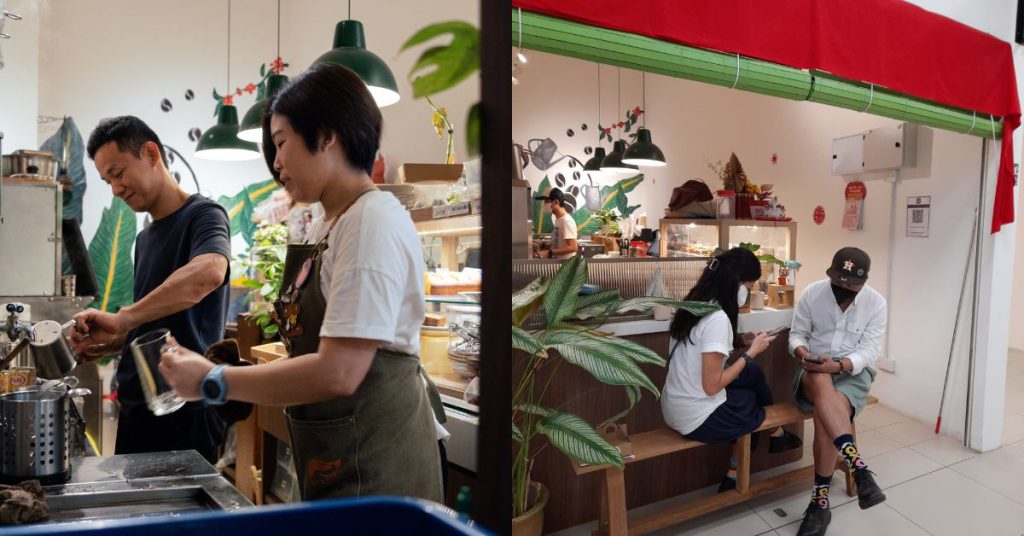
Tommy’s experience as an owner and coffee roaster at TKK Hainan Coffee, which has been around for over 50 years, fueled his passion to open Jiak Kopi with Cherrie.
He has been exposed to Hainan coffee since he started his career, and his love for it makes him dream big—he wants everyone to know about Malaysian Hainan coffee, just like they know about Starbucks.
Tommy passed on his knowledge to Cherrie, making her the “Kopista” of Jiak Kopi.
During the MCO, they explored the idea of Hainan coffee delivery directly from the roastery of TKK Hainan Coffee but due to logistical constraints, they had to change their plans.
They settled in a 200sq ft unit in GMBB Mall, Bukit Bintang, due to its small size and strategic location near corporate offices.
Coming from a banking background, Cherrie leveraged her banking insights particularly in consumer products and portfolio management to foster customer loyalty and community engagement.
Alongside offering attractive discounts to patrons of the GMBB community, “We offer coffee subscription plans for companies based within the building and discounts to GMBB tenants,” she told Vulcan Post.
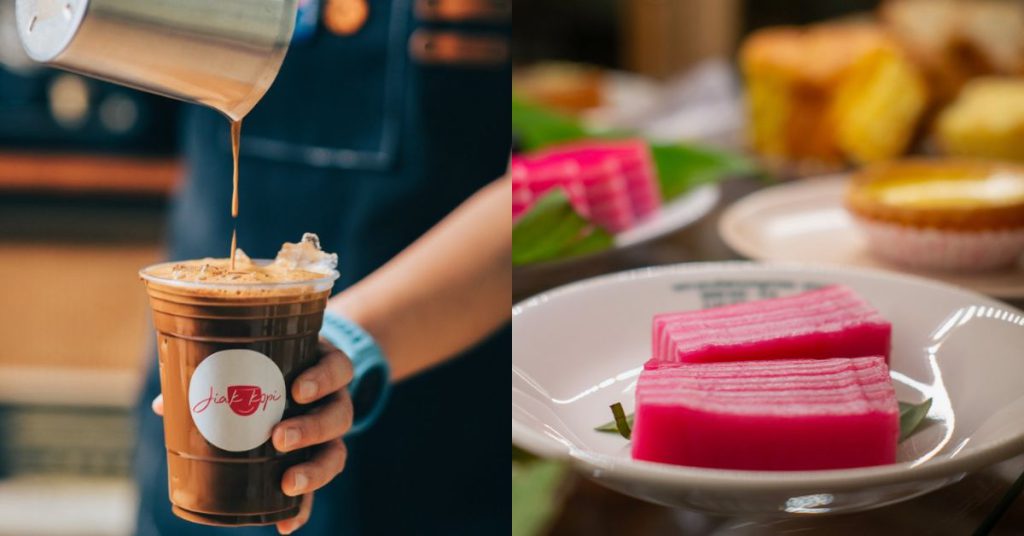
Besides, they offer seasonal beverages to add more excitement during festivities and run campaigns like BiJIAK Vote during the Malaysian General Election, giving customers the opportunity to win a month’s worth of free drinks.
Bridging tradition and modernity
Cherrie and Tommy fell in love with GMBB during The 108 Project – Art Exhibition before the pandemic.
If you are familiar with GMBB you’ll know it’s known for its artsy stalls and shops. They loved that and the vibes that GMBB has created.
“We chose GMBB for its central location and the influx of tourists from around the world, which we hope can bring back this unique experience to their home country,” Cherrie said.
Since its inception, Jiak Kopi has become a favorite spot for regulars, including employees and residents from nearby places like The Robertson Residence, Magnum Berhad, and Tung Shin Hospital.
Step inside the cafe and you’ll be treated to art pieces from the building’s artists in their shop, but the bulk of their decoration comes from Cherrie’s uncle, who’s a vintage collector. More vintage elements come from custom fixtures made by a tenant, and the cousins’ grandmother’s old sewing machine.
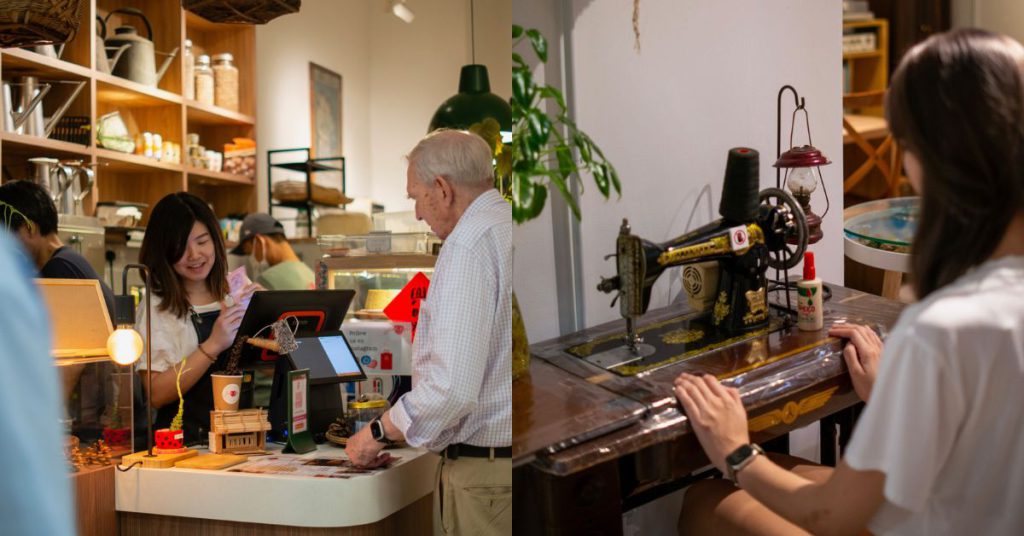
These design choices help set them apart, Cherrie believes.
“Within the vicinity, Jiak Kopi is probably the only one that serves Hainan kopi in a cafe setup or style,” Cherrie explained.
When it comes to food and snacks served at Jiak Kopi, Cherrie’s mother takes charge of that section. However, Cherrie herself creates seasonal menus and occasionally adds homemade treats from her aunt as specials for the day.
You’ll find nasi lemak, loaf cakes, and roti bakar with homemade kaya as some popular options to pair with their Hainan coffee.
Considering their central location, Jiak Kopi wants their offerings to be enjoyed by all, so they’ve ensured that they’re Muslim-friendly.

Additionally, Jiak Kopi also implements environmentally friendly practices, promoting reusability and waste reduction.
They encourage customers to use their serving cups, which can be brought back and returned to the shop instead of using takeaway cups.
Overcoming challenges sip by sip
Staffing remains a challenge for them. They haven’t been able to hire extra “Kopistas”, which poses an issue during peak servicing hours and limits the opportunities for managing catering requests.
Currently, Cherrie manages Jiak Kopi full-time, while Tommy, committed to TKK Hainan Coffee, joins on weekends as the “Kopista.” Thankfully, they also receive additional support from family members during the weekdays to keep the business running smoothly.
Operating with a small team, the duo wears multiple hats, from managing day-to-day operations to social media marketing. Sometimes, they find it challenging to implement all their ideas due to limited resources.
However, for some administrative jobs such as accounting matters, they managed to outsource people.
Despite limitations, they believe they’ve successfully connected with their target audience, which comprises young adults all the way up to the ah gong and ah ma generation. They achieve this by constantly refining their roasting techniques and selecting beans that cater to a variety of tastes.
From one lot to three, growing with the community
Jiak Kopi, with approximately RM100K investment, has come a long way.
Initially, they started with one lot, then expanded to two to accommodate more seating. They now run in a three-lot setup, with even more seating areas, elaborate displays, and decorations integrated.
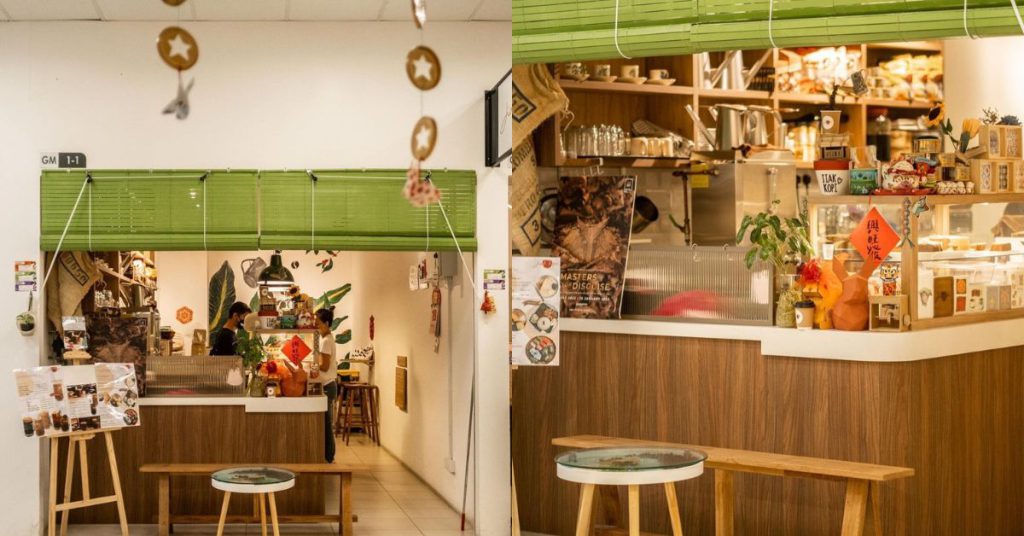
Although they have more expansion plans in the future, for now, they are focused on providing the best experience to their customers in their current place.
They also aspire to serve and attract more international tourists, similar to VCR Coffee and LOKL Coffee, to give more exposure to the culture and experience of Malaysian Hainan coffee.
Cherrie and Tommy’s dream of bringing Malaysian Hainan coffee to the world is well underway, one cup at a time.
- You can learn more about their business here.
- Read other articles we’ve written about Malaysian startups here.
Also Read: Employees need a Copilot to boost productivity & ease brain drain. This webinar shows how.
Featured Image Credit: Jiak Kopi / The founders
3 GenAI use cases with the potential to take off in M’sia, based on global examples

[This is a sponsored article with SNS Network.]
Most people would know the basics of generative AI (GenAI) by now, with ChatGPT being one of the most popular and widely adopted examples.
But the tech goes beyond language models—take this Japanese-founded AI called BakeryScan that was developed to differentiate pastries at bakery checkouts. It was later found to be capable of detecting cancer cells with up to 99% accuracy too.
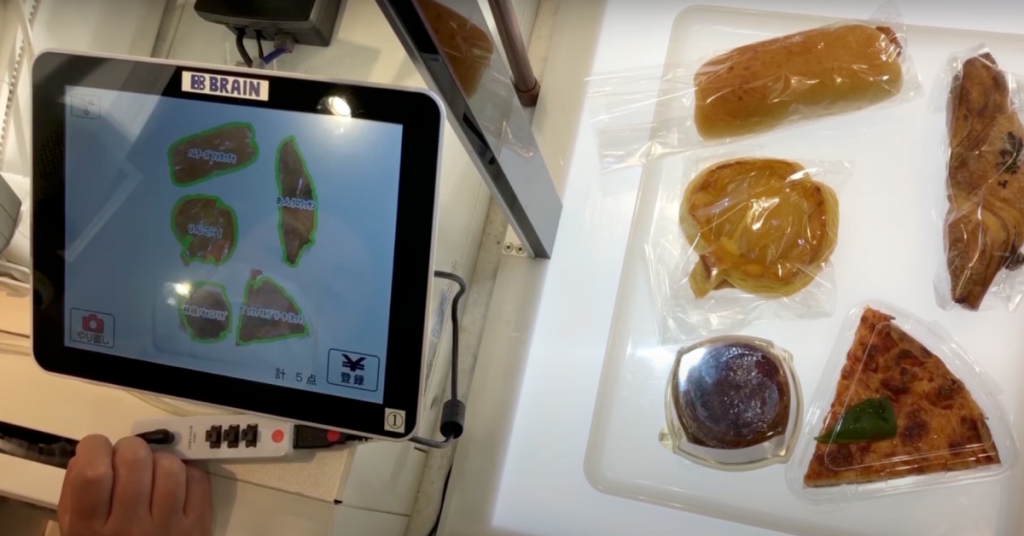
It’s pretty fascinating what AI can do when coupled with other forms of deeptech, including IoT, AR, VR, robotics, biotech, and more.
In partnership with SNS Network, we’ve selected three use cases of how GenAI has been utilised to solve real-life industry problems, powered by Dell Technologies GenAI solutions.
For context, Dell Technologies GenAI solutions are capable of providing organisations with:
- Purpose-built integrated solutions that are tested for specific use cases.
- Purpose-built AI and high-performance computing (HPC) capabilities, offering quality acceleration and diverse GPU options.
- Flexible storage solutions tailored for performance.
- Workstations that can accelerate AI development, enabling faster experimentation and calibration for GenAI models.
1. Healthcare
If the above cancer-detecting pastry AI is anything to go by, it’s clear that healthcare has plenty to benefit from GenAI. Another example comes from New York City-based Medivis. The company built an FDA-cleared solution called SurgicalAR to help surgical teams use immersive AI-based, 3D holographs to rehearse their procedures.
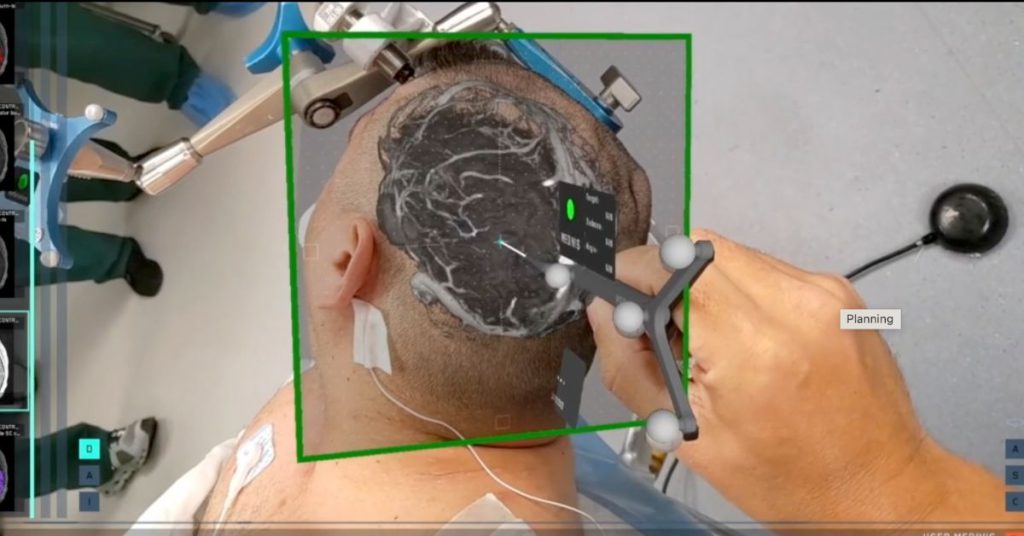
Here, AR and digital recreations of the human body are used by surgeons to practice difficult procedures, especially those involving the brain, throat, and heart. This way, surgeons can practise their moves ahead of time in a zero-risk environment, reducing both the stress and duration of the actual operation.
Pre-op patients can also preview their upcoming procedures to increase their understanding, and potentially help reduce their anxiety.
Coupled with the Microsoft HoloLens 2, Medivis built SurgicalAR on the Dell Technologies Precision workstation and NVIDIA RTX GPUs. Simply put, the servers and tech are tightly integrated for ultra-fast processing to provide high performance, reliability, and security.
SurgicalAR also utilises Dell Technologies EMC PowerEdge servers with NVIDIA GPUs and EMC data storage systems.
Together, they’re designed to work in conjunction with a hospital’s picture archiving and communications system (PACS). It’s basically a huge server and storage system that contains all the medical imaging files that a hospital generates.
Moreover, GenAI can also transform personalised medicine. By analysing a patient’s data, AI algorithms can identify a patient’s prognosis, help detect disease earlier, and develop effective treatment plans.
Locally, Focus Point’s 2023 World Sight Day event displayed how an AI ocular tech could detect more than 35 types of diseases such as diabetes, hypertension, and glaucoma with a reported accuracy of more than 95%.
By knowing this information, patients can proactively take preventative steps towards improving their health.
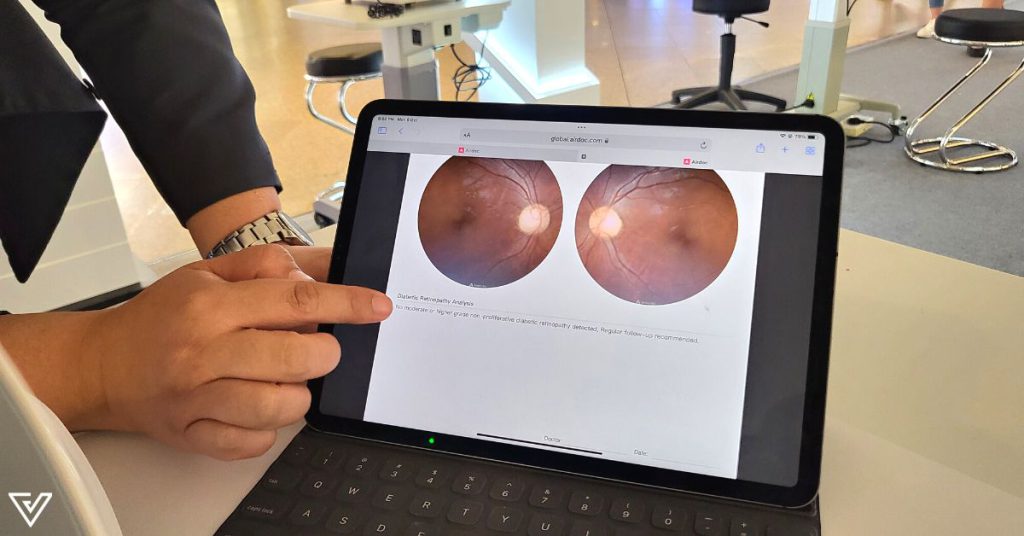
With Malaysia aiming to generate RM2.4 billion in revenue from the health tourism sector this year, AI could even be used to help health facilities predict the influx of patients during peak seasons.
This can support healthcare centres adjust staffing levels accordingly, and ensure that the hospital has sufficient treatments on hand to meet the increased demand.
2. Agriculture
GenAI can provide local farmers with access to a wealth of information and tools, enabling them to make more informed decisions about their farming practices.
For example, the Canadian-based Nature Fresh Farms utilises timelapse videos to monitor the growth of their tomato crops. These videos give their farmers insights into optimal planting times, soil health management, efficient water usage, and pest control strategies.
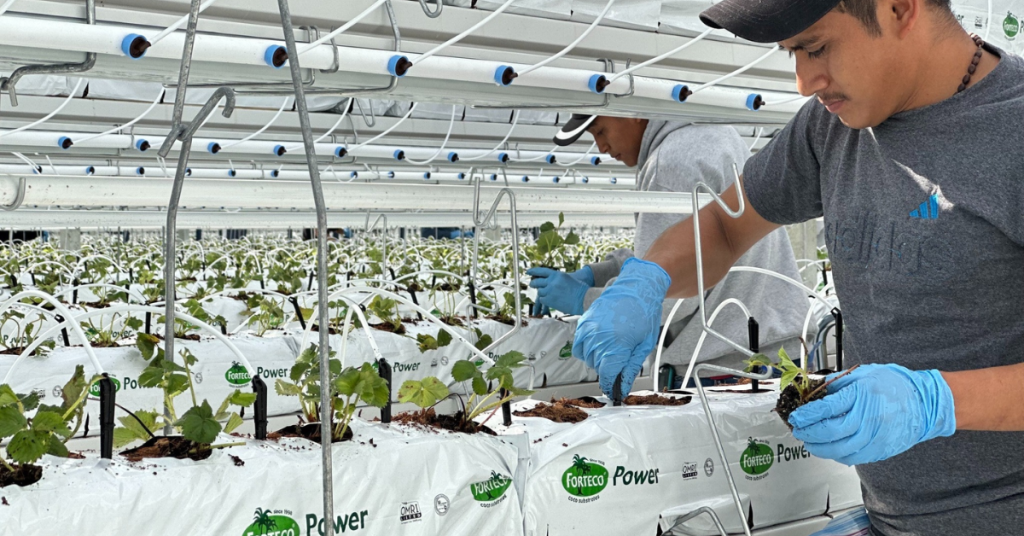
As Nature Fresh Farms’ greenhouse grew from 64 to 128 acres, the IT team ran out of space on their servers to store all the videos. The videos were also spread across multiple servers, leading to the team facing issues with reliable and fast video access.
Eventually, the company upgraded to the Dell Technologies PowerScale storage running the Milestone VMS video surveillance solution to solve their storage-related challenges. Nature Fresh Farms also uses VMware SD-WAN by VeloCloud, meaning that they can get a unified view of data and video across the greenhouses.
By leveraging data-driven AI tools, farms and greenhouses can optimise their yields and resource utilisation, leading to increased crop productivity and income.
Malaysia’s agritech industry is undeniably resilient, and is a notable sector embracing emerging tech.
We’ve seen the local agritech industry utilise drones for farm monitoring, 5G sensors for crop harvesting, and AI to control the weather in indoor farms.
If used sufficiently, GenAI solutions in agritech could contribute to solving the food security issue that still remains a challenge locally.
3. Environmental management
Citizens of the Great Barrier Reef (Citizens) aims to help scientists collect up-to-date insights on the Great Barrier Reef (GBR). These insights can then help scientists increase their understanding of coral health to form effective and scalable conservation efforts.
However, continuously capturing and analysing images of the world’s largest coral ecosystem (spanning 348,700km²) requires more resources than what the scientists had.
So, Citizens partnered with Dell Technologies, using deep learning models and AI-powered analytics that could create a visual map of the entire reef and accelerate image analysis.
Dell Technologies’ AI-powered servers are also used to store, manage, and analyse reef data, which automated Citizens’ workflows, accelerating the categorisation of the coral in individual images in seconds.

Other than mapping the world’s seabed, GenAI can also help communities endure the harsh effects of climate change.
In Malaysia, existing AI systems include tools that predict the weather, which can help disaster management agencies reduce the impact of floods, landslides, and earthquakes on communities.
We’ve witnessed these tools be used in disaster simulation exercises, preparing first-response teams, agencies, and communities in the event of real disasters as Malaysians continue to experience more severe weather.
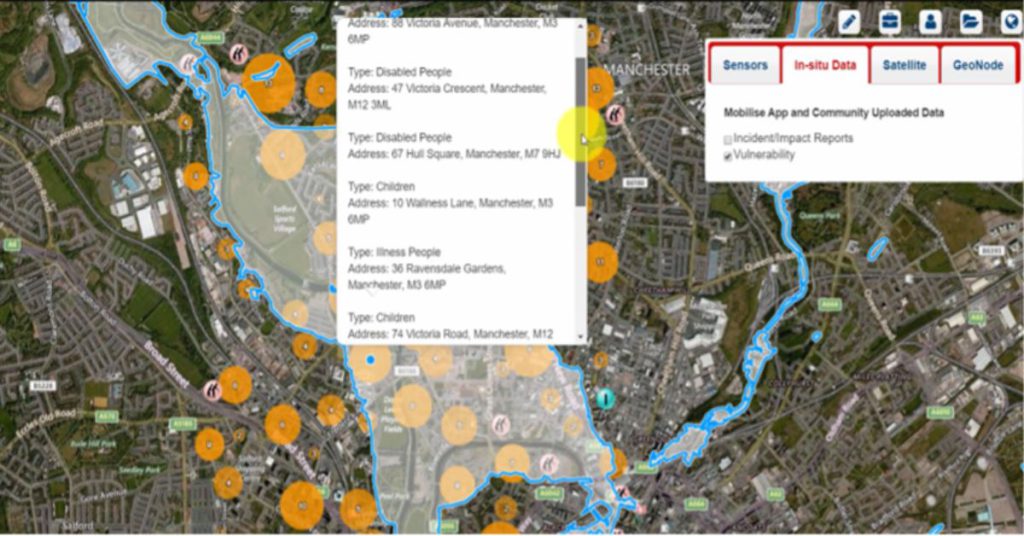
When GenAI is used to predict dangerous climate events accurately in advance, it can give organisations and communities ample time to come up with management and preparedness strategies.
By knowing this information ahead of time, it could also lead experts in urban planning and industrial design to plot more resilient buildings and civil structures. With hardier irrigation systems, bridges, and tunnels that can withstand natural disasters, it can ultimately protect lives and property, as well as save costs in the long run.
-//-
These are just three impressive use cases for GenAI, which still has plenty more applications as the tech becomes more sophisticated.
Thus, leveraging the expertise of reputable IT companies such as Dell Technologies can provide organisations with tailored solutions for individual business needs.
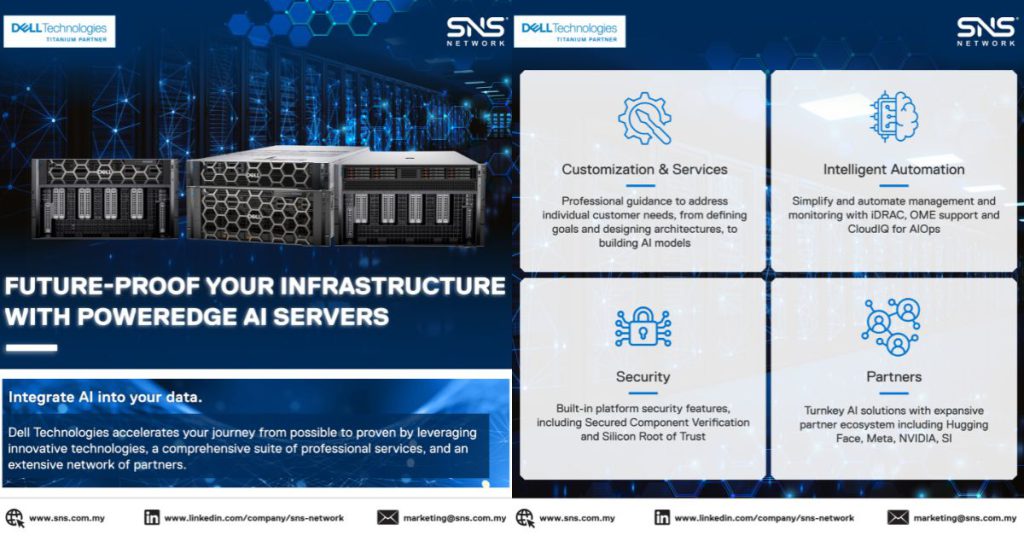
Dell Technologies offers a range of servers designed to work super fast, especially when paired with NVIDIA GPUs, which can be likened to powerful computer processors.
These GenAI servers are built with a special approach called PowerEdge. This makes them efficient at handling the latest technology, from training and running AI, or doing complex maths for science and engineering, to analysing data and running heavy applications.

- Register your interest in Dell Technologies Generative AI Solutions here, and Dell Technologies Titanium partner, SNS Network here.
- Read about other AI-related topics we’ve written here.
Also Read: Airbot’s new self-cleaning robot vacuum boasts 3 promising features, we test each one out
Featured Image Credit: BakeryScan / Medivis